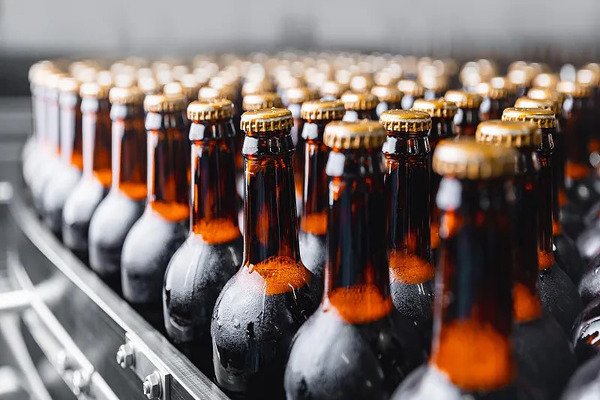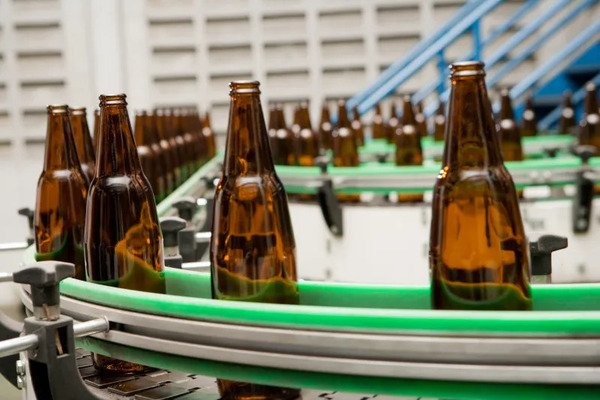Beyond the Bottle: The Critical Role of Your Beer Filling Machine in Quality & Success
Every craft brewer understands the magic in the mash tun and the artistry in fermentation. Yet, that meticulously crafted flavour profile, that perfect balance of hops and malt, faces its greatest vulnerability after brewing – during filling machine beer operations. It’s not merely about transferring liquid; it’s the decisive moment where science meets precision engineering to safeguard your liquid gold. An advanced filling machine is the unsung hero, the crucial barrier protecting your reputation with every single can or bottle filled.
The Invisible Enemy: Why Standard Filling Isn’t Enough for Premium Beer
Imagine crafting the perfect IPA, bursting with aromatic hops, only to have it taste stale or cardboard-like weeks later. The culprit? Oxygen (TDO – Total Dissolved Oxygen) and contamination introduced during filling.
- The Oxygen Assault: Even microscopic amounts of oxygen absorbed during filling accelerate staling reactions, destroying delicate hop aromas and creating off-flavours. Traditional filling methods are often oxygen’s biggest ally.
- The Carbonation Conundrum: Beer’s lively CO2 is essential, but uncontrolled during filling, it causes excessive foaming leading to spillage, inconsistent fill levels, and trapped air pockets – further increasing oxygen exposure.
- Contamination Risks: Residual microbes lurking in inadequately cleaned equipment or bottles/cans can turn your prized brew sour or hazy, leading to costly recalls and brand damage.
- The Efficiency Squeeze: Slow changeovers between bottle types, cans, or sizes, inconsistent fills causing giveaway, and high breakage rates directly eat into your profitability.
Engineering Excellence: How Modern Filling Machines Combat These Threats
Today’s leading filling equipment integrates sophisticated solutions designed specifically for beer’s unique challenges:
- The Oxygen Barrier: Pre-Purging & Counter-Pressure Magic
- Vacuum/CO2 Pre-Purging: Before beer enters, the container (bottle or can) is evacuated or flushed with pure, food-grade CO2, displacing ambient air and creating a protective, low-oxygen atmosphere.
- Counter-Pressure (Isobaric) Filling: The cornerstone of quality beer filling. Pressure inside the container is precisely equalized with pressure in the product tank (using CO2 or nitrogen). Only then is beer gently introduced under counter-pressure, drastically minimizing foam formation, CO2 loss, and oxygen pickup. This is the gold standard for preserving freshness.
- Precision Liquid Handling: Accuracy is King
- Gentle Under-Bottom Filling: Filling tubes extend near the bottom of the container, allowing beer to flow smoothly upwards, minimizing turbulence and foam generation compared to splash filling.
- Micro-Foam Control: Advanced valves create a fine, stable layer of foam (micro-foam) at the very end of filling. This acts as a physical barrier, displacing residual air in the bottle neck and further protecting the beer from oxidation.
- Electromagnetic Flow Meters: Deliver pinpoint fill volume accuracy (±0.5% or better), ensuring every customer gets exactly what they pay for and minimizing costly product giveaway.
- The Hygiene Imperative: Built-In Sanitary Assurance
- Full CIP/SIP Integration: Sophisticated Clean-in-Place (CIP) and Sterilize-in-Place (SIP) systems ensure every internal surface, valve, and pipe that contacts beer is thoroughly cleaned and sterilized automatically, eliminating microbial contamination risks without time-consuming manual disassembly. High-temperature, chemical, or combined cycles are programmable.

The BDCGF Series Filling Machine
Meeting the demanding needs of breweries from ambitious craft operations to larger regional players, the BDCGF Series exemplifies how robust engineering delivers quality and efficiency. Designed specifically for filling machine beer applications, it integrates seamlessly into your workflow:
- Versatile Capacity: Handles a broad range of container sizes (200ml – 2000ml) and types – glass bottles, PET bottles, and aluminum cans – making it ideal for breweries with diverse packaging lines.
- Scalable Output: Choose the model matching your growth trajectory, offering production speeds from a craft-friendly 2,000 bottles per hour (BPH) up to a substantial 36,000 BPH for higher-volume needs.
- Integrated Efficiency: Combines rinsing, filling, and capping (Rinsing-Filling-Capping or RFC) within a single, compact monoblock unit. This streamlined design minimizes footprint, reduces conveyor complexity, and optimizes the entire process under unified control.
- Optimized Filling Technology: Utilizes gravity or gentle micro-pressure filling, intelligently applied based on the product and container. This approach ensures faster cycle times and exceptional operational stability, translating directly to higher throughput and greater profitability compared to similar machines lacking this refined control. Expect consistent, reliable fills batch after batch.
- Uncompromising Control & Reliability: At its core lies an advanced Mitsubishi Programmable Logic Controller (PLC), the industrial-grade brain managing every sequence with precision. Integrated with variable frequency drives (VFDs/inverters) on critical components, it ensures smooth ramping, precise synchronization, and energy-efficient operation, significantly enhancing overall machine reliability and lifespan.
- Intelligent Monitoring: A network of high-sensitivity photoelectric sensors acts as the machine’s nervous system, continuously monitoring component positions, container presence, fill levels (indirectly via timing/position), and cap feed. This provides real-time feedback to the PLC for automatic adjustment and immediate fault detection.
- Operator-Centric Design: Despite its sophistication, the BDCGF prioritizes usability. The intuitive Human-Machine Interface (HMI) touchscreen allows for easy recipe selection (different containers/volumes), parameter adjustments, production monitoring, and diagnostic access. Simplified mechanical access points aid maintenance.
Choosing Your Champion: Key Considerations When Selecting a Beer Filling Machine
Investing in a filling machine is strategic. Beyond basic specs, consider these critical factors:
- Your Core Needs: Define your primary container types (glass, can, PET?), target volumes (peak and average), required fill accuracy, and maximum acceptable TDO levels. Are you focused on crowlers, 12oz cans, or large-format bottles?
- Oxygen Management Capability: Insist on detailed TDO performance data for the specific machine under your typical conditions. Aim for consistently below 100 ppb for quality craft beer; < 50 ppb is world-class. Pre-purging and true counter-pressure are non-negotiables for serious brewers.
- Hygiene by Design: Evaluate the CIP/SIP system’s effectiveness – flow patterns, coverage, temperature control, and validation protocols. Sanitary materials (AISI 316L stainless steel, FDA-grade seals) are essential.
- Flexibility & Changeover Speed: How quickly and easily can you switch between bottle sizes, can types, or even between bottles and cans? Look for quick-release mechanisms, tool-less adjustments, and stored recipes. Downtime is lost revenue.
- Throughput vs. Stability: Higher speeds are attractive, but not if they compromise fill accuracy or increase oxygen pickup or breakage. Validate performance at your required speed.
- Total Cost of Ownership (TCO): Look beyond the purchase price. Factor in installation, utilities (water, energy, compressed air, CO2), consumables (lubricants, seals), maintenance complexity, spare parts availability/cost, and expected lifespan. A robust, reliable machine like the BDCGF often offers a superior TCO.
- Manufacturer Reputation & Support: Choose a supplier with proven expertise in filling machine beer technology. Investigate their installation, training, and technical support responsiveness. Availability of local service engineers and critical spare parts is crucial for minimizing downtime. Request references from similar-sized breweries.
The Full Symphony: Integrating Your Filling Machine into a Complete Line
Your filling machine is the star, but it performs best with a skilled orchestra:
- Depalletizer: Automatically feeds empty containers onto the line.
- Pre-Rinser (Optional but Recommended): Removes coarse debris before the filling machine’s internal rinse.
- External Rinser/Inspector (Optional): For glass bottles, a dedicated external washer and Empty Bottle Inspector (EBI) using cameras or lasers to detect critical defects (chips, cracks, residues) are vital.
- Beer Filling Machine (RFC Monoblock – BDCGF): Performs rinsing, filling, and capping/seaming.
- Tunnel Pasteurizer or Hot-Fill Process (if applicable): For non-sterile filtered beers requiring microbial stability.
- Full Bottle Inspector (FBI): Checks fill level (via weight, ultrasound, or vision), cap presence/seal integrity, label application, and final product clarity. Essential QA.
- Labeler: Applies front, back, and neck labels accurately.
- Packaging: Bundlers (six-pack holders), case packers, tray packers, and palletizers prepare product for distribution.
- Control System (SCADA/MES): Supervisory software monitoring the entire line’s performance, OEE (Overall Equipment Effectiveness), and providing production data.
Tailoring Technology: Craft vs. Industrial Beer Filling Solutions
The ideal filling machine setup differs significantly based on scale and focus:
- Craft Breweries (2,000 – 15,000 BPH): Prioritize flexibility, ease of use, and gentle handling. The BDCGF series fits perfectly here. Key needs:
- Rapid Changeovers: Switching between bottles, cans, and sizes in minutes, not hours.
- Counter-Pressure Filling: Essential for quality, even at modest speeds.
- Manageable Footprint: Space is often limited.
- Affordable Automation: High ROI on automating rinsing, filling, capping. Integrated RFC monoblocks offer excellent value.
- Moderate Speed & High Reliability: Consistent output trumps raw speed. Machines like the BDCGF (2000-36000 BPH) offer this crucial scalability.
- Large-Scale Breweries (36,000+ BPH): Demand extreme speed, maximum uptime, and deep integration. Solutions often involve:
- High-Speed Rotary Fillers: Complex machines with dozens or hundreds of filling valves.
- Dedicated High-Speed Lines: Separate, optimized lines for cans and bottles.
- Advanced Automation & Robotics: For palletizing, case packing, and material handling.
- Sophisticated Process Control & Data Analytics: Real-time TDO monitoring, predictive maintenance, full traceability.
- Extensive CIP/SIP & Hygiene Protocols: Automated, validated cleaning for massive systems.

The Future is Flowing: Emerging Trends in Beer Filling Technology
The evolution of the beer filling machine continues, driven by demands for quality, sustainability, and intelligence:
- Hyper-Oxygen Control: New valve designs, inert gas flushing techniques, and even in-line dissolved oxygen measurement during filling push TDO levels consistently below 20 ppb.
- “Intelligent” Filling Valves: Valves equipped with micro-sensors providing real-time feedback on fill volume, temperature, pressure, and potential TDO ingress for instant self-adjustment.
- AI-Powered Predictive Maintenance: Machine learning algorithms analyzing vibration, temperature, pressure, and performance data to predict component failures before they cause downtime, scheduling maintenance proactively.
- Enhanced Flexibility Platforms: Modular designs allowing breweries to easily reconfigure filling heads, capping stations, or even integrate new container types with minimal re-engineering.
- Sustainability Focus: Drives towards reduced water usage in rinsing/CIP, lower energy consumption (high-efficiency motors, VFDs everywhere), CO2 recovery systems, and reduced material waste (lighter bottles/cans, optimized fill volumes).
- Digital Twins & Virtual Commissioning: Creating virtual models of the filling line for testing, optimization, and operator training before physical installation, reducing startup risks and time.
Beyond Installation: Maximizing Your Beer Filling Machine Investment
Buying the machine is step one. Optimizing it is continuous:
- Rigorous Preventive Maintenance (PM): Don’t wait for breakdowns. Follow the manufacturer’s PM schedule religiously for lubrication, seal inspections, valve calibration, sensor checks, and CIP system validation. Document everything.
- Master Changeovers: Streamline SOPs for switching formats. Use SMED (Single Minute Exchange of Die) principles. Time is money.
- Operator Training is Paramount: Ensure operators deeply understand the machine’s principles (especially counter-pressure!), normal operation sounds/vibrations, basic troubleshooting, and hygiene protocols. Empower them.
- Strategic Spare Parts Inventory: Identify critical wear parts (specific seals, valve stems, sensors) and keep a strategic stock based on lead times. Negotiate support agreements.
- Data is Your Ally: Utilize the PLC and SCADA data. Track OEE, identify downtime causes (mechanical, changeover, cleaning), monitor fill accuracy trends, and measure TDO consistently. Use this data to drive continuous improvem
The Indispensable Guardian of Your Brand
In the fiercely competitive beer market, where consumers have endless choices, consistency and quality are non-negotiable. Your filling machine is far more than production equipment; it’s the final, critical guardian of the flavour, aroma, and freshness your brewers worked so hard to create.
Investing wisely in this technology, and committing to its meticulous operation and maintenance isn’t just about efficiency. It protects your reputation, satisfies your customers, and ultimately, fuels your success. When your beer consistently tastes fresh and vibrant, credit belongs not just to the brewmaster, but equally to the silent precision of your advanced beer filling machine.

